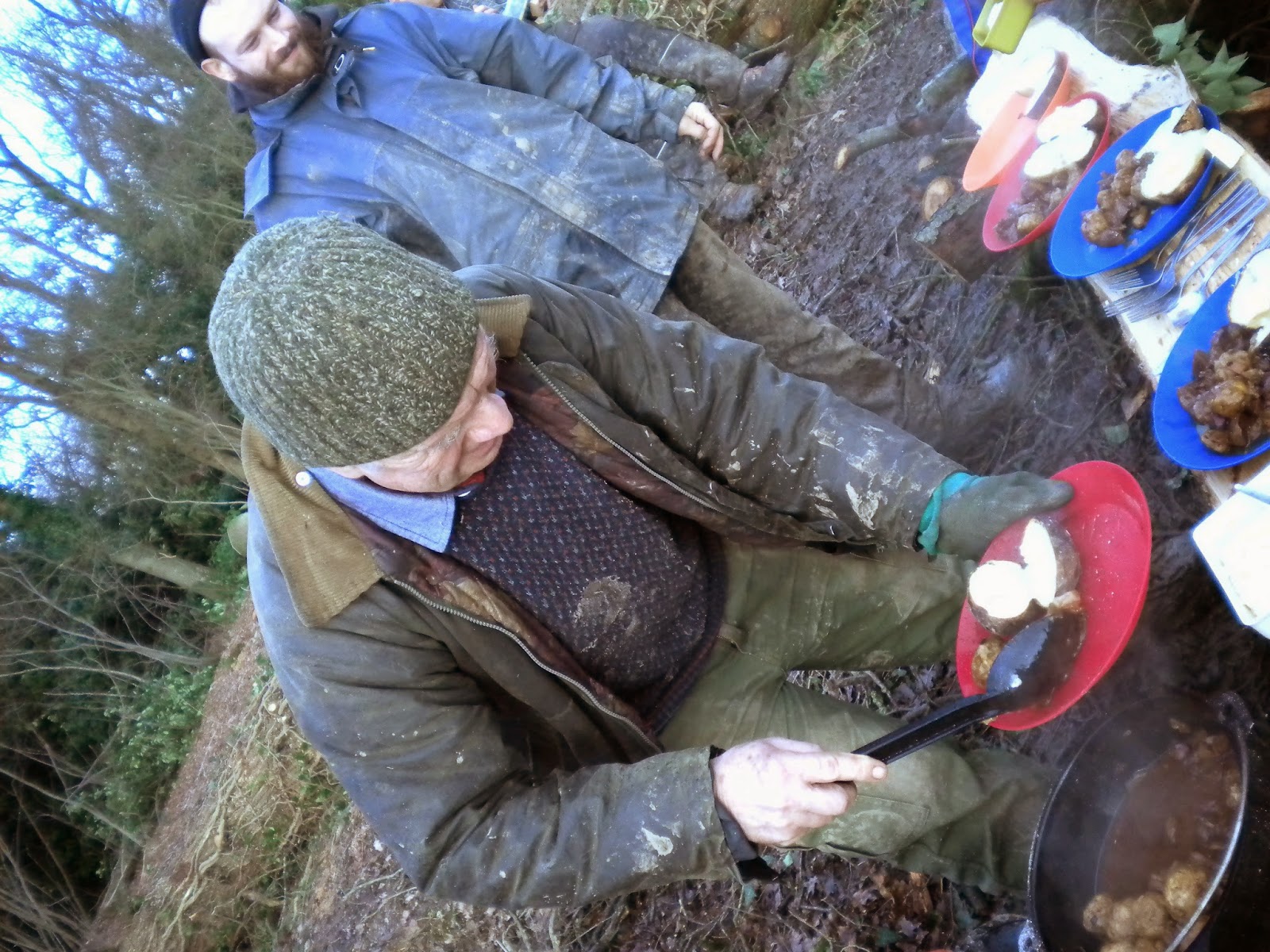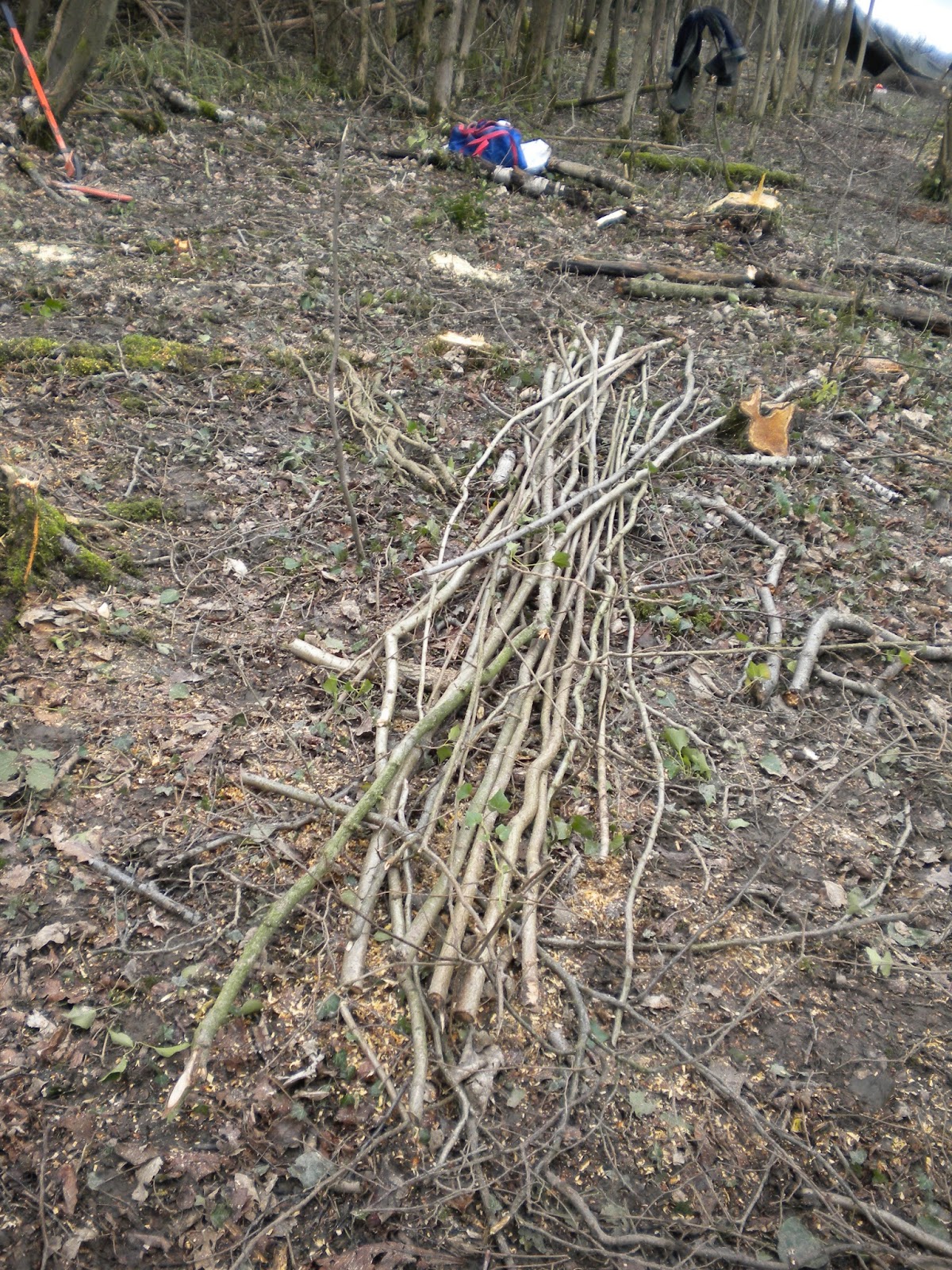Just me, in my jammies, with my blankie and my cup(s) of lemon ginger tea.
I know.
It may not be the most exciting New Years Eve anyone has ever had. But it was mine. I was actually quite content. And. Truth be told, I didn't watch the movie just once. I watched it 1 and 1/2 times. Here, there are channels that run the same programming, just and hour later. So. I watched the movie. And then I watched the last part again.
(I confess. I have seen this film many, many times already, and will never pass up an opportunity to watch it again.)
It is a classic musical film, made in 1954. It is set in 1850's Oregon, about seven lumberjack brothers who decide to kidnap brides for themselves from a neighboring town...
and they all lived happily ever after.
Can you imagine how well this storyline would go over in this world we live in?
Since January is the Underwoodsman's month for felling the big trees, as part of his woodland management plan for Bore Place. It seemed fitting to watch a film about lumberjacks.
(And. I will never tire of 'happily ever after", as long as I live).
Now then. What is a lumberjack?
lumberjack
ˈlʌmbədʒak/
noun
- 1.Worker in the logging industry who perform the initial harvesting and transport of trees for ultimate processing into forest products. The term usually refers to a bygone era when hand tools were used in harvesting trees.
Who? John Waller, the underwoodsman. Jake the apprentice. Romain Scordel, another area tree surgeon and gardener extrordinaire. Jack, his helper (and freelance graphic designer!). Mike W, veteran volunteer, keeper of the fire and master chef of the wood. Michael and Warren, new volunteers. And, last but not least. Me, sans Betty.
Where? Kilnhouse Wood, Bore Place.
What? Felling large trees. Cutting anything roughly 3 inches in diameter and greater into 6 foot lengths. Stacking it. Burning all the remaining twigs and branches.
How? Usually 2 chainsaw guys (John, Jake, Romain) at a time fell the trees and cut it to length. Everyone else drags, carries, tumbles, rolls or otherwise manoeuvres the cut lengths neatly onto the stack... and all the other stuff neatly onto the fire. All the while, trying to stay out of the way of falling trees, swinging billhooks and flying sparks whilst simultaneously trying not to fall into the fire or any of the above mentioned cutting tools due to tripping on brambles, branches on the ground or sticking up out of the ground (having been properly propelled into it from the force of the tree falling) or the remaining stumps of small trees.
Because the management plan is to restore a coppice system to section of woodland harvested each year, the large (ash) trees are cut at 4 feet off the ground. The reason for this is twofold. It will allow for more dormant buds under the bark to have opportunity to sprout and grow, thus, giving each tree (and/or stool) a better chance of survival. Also, the hope is that significant regrowth will be at the top of the stump, making it more difficult for deer to munch the new growing shoots.
This is a change started with last year's harvest. Prior to that, they were leaving 2 foot (ish) stumps.
It is my understanding then that John is planning and hoping for a 20 year rotation. I appreciate this strategy, not only in woodland management, but also in all life practices. It is planning for the benefit of future generations of people, woodland, wildlife. A concept, sadly left behind in so many cultures.
Two years ago, I heard horror stories about how awful January would be... but then, the winter was very mild and relatively dry. This year, I got a taste of the 'horror'.
The first week, we were harvesting trees along the edge of the field. Trees were felled into/towards the field, so that the stacks of wood could be established at the edge of the field making them easier to access by the chipper after they have dried for two years. That's all well and good... but if you've ever dealt with clay soils, you'll know that, they get saturated with water easily, and once they do, they become a muddy mess. A little bit of rain, us treading back and forth over the same area, and more rain and a short day or so later I was sinking in nearly to the top of my hiking boots.
Every. Single. Step. Was. An. Effort.
It felt like my boots were getting sucked off my feet!
One thing though. At the end of the day it was a blessed relief to walk home via the road. I was foot loose and fancy free. And, reminiscent of my childhood days, I took each and every opportunity to meander thru the puddles and splash around a bit, to clean off my boots.
Somewhere along the way, during week two, we crossed over the ditch into the woodland itself. The woodland floor was a little more stable, but a few days of rain and we had a muddy moat around the fire. Thankfully, the fire moved with us as we progressed along. And we had some days that were free of rain.
I wore my waterproofs most every day. At each days end, I was covered in mud from head to toe. The first week, i'd put them in the bathtub every night to get most of the mud off... but then, I just gave up and hung them in the entryway to somewhat solidify overnight, and put them on again the next day, still caked in mud.
The mud was, I think, the most challenging part of January. It is serious business, felling large trees, there's lots that can go wrong and when you see the force with which those trees hit the ground. Its frightening to think about being under one. Despite the mud and difficulty's, still, there was plenty of joking around and laughter. Lots of picking on the American. This is something that everyone else seemed to pick up on very, very quickly from John Waller. I did have a respite every once in awhile when they were picking on Romain (he's French). But, I can dish it out when I need to too... so, I held my own!
Mike did several meals for us again. what that guy can do with a dutch oven and an open fire. Amazingly delicious. Each one better than the last.
1) wild game stew (duck, rabbit, venison) with dumplings, and jacket potatoes.
2) curry seasoned fish with a side of stewed charizo, chickpeas and spinach, and jacket potatoes.
3) pheasant in straw or hay... this actually had an interesting name that I can't remember, and of course, Mikes signature jacket potatoes.
4) In honor of "Burns Day" haggis, squash, and jacket potatoes.
5) On our last day of work, chili con carne with, you guessed it, jacket potatoes.
Pictures... in no particular order...
 |
| JW cutting off side branches and trees into log lengths |
 |
| Romain getting the fire under control |
 |
| billhook resting in a tree... don't try this at home |
 |
| Jack, ready to rock and roll |
 |
| Romain getting the rope around the tree in preparation for felling. |
 |
| Romain and Jack manning the rope to direct this tree in the way it should go... typically used for trees leaning the wrong way. John Waller manning the chainsaw. Me manning the camera. |
 |
| Mike serving up the first of several delicious meals! |
 |
| yours truely |
 |
| just one of many large stacks of wood |
The fruits of our labour...
 |
| wood stacked in neat piles to season and then get chipped next year. |
 |
| pea sticks (aka the side branches of hazel) in piles to be gathered and tied into bundles of 20 for sale to individuals and large gardens like Chelsea Physic. |
 |
| 'twilly rods' and binders for hurdle making and hedge laying. |
 |
| potential stake material for hurdles and hedge laying |
 |
| a typical stool... left to grow until its next harvest time! |
 |
| tools of the trade |
 |
| 'my' cup of the year... it says 'nice one'. |
and that was January tree felling!
nice one-
susie

No comments:
Post a Comment